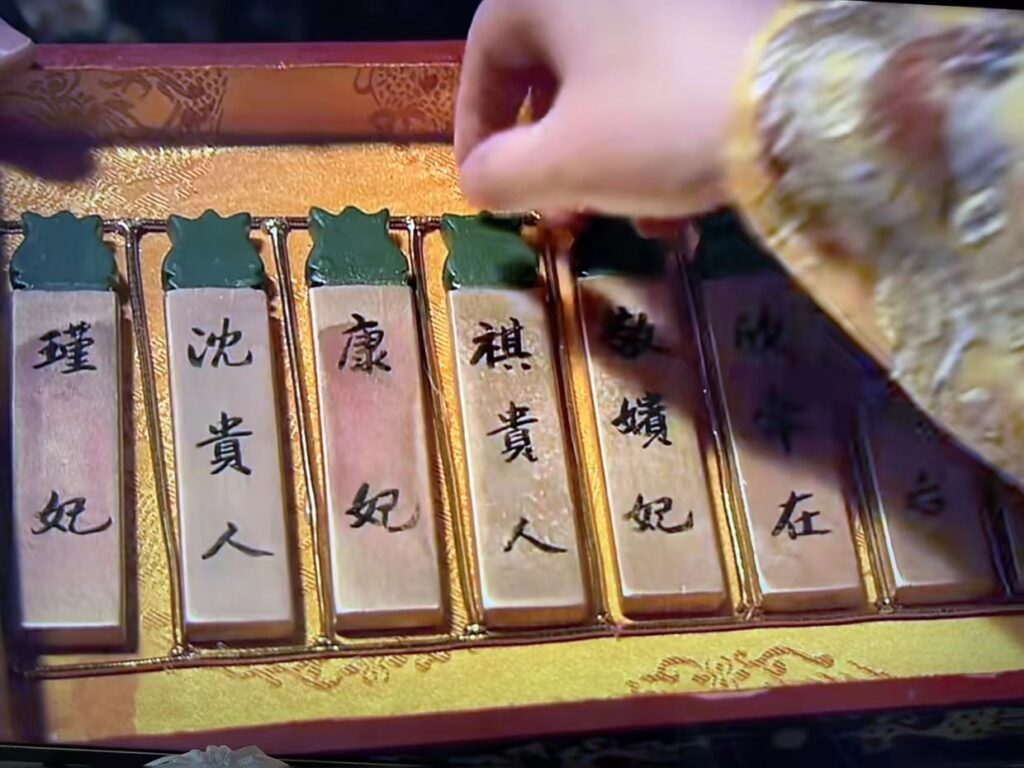The process for imperial concubines to attend to the emperor varied slightly across dynasties, but the core purpose remained the same: to reinforce imperial authority over the harem and ensure the legitimacy of the royal bloodline. By the Ming and Qing dynasties—when the system was most formalized—the process typically unfolded in the following steps.
1. Preparation: Selection and Approval
- “Flipping the plaque” (mainly in the Qing Dynasty): After dinner, eunuchs would present the emperor with small plaques bearing the names of eligible concubines. If the emperor was interested, he would flip the plaque, and the eunuch would record the choice.
- Exclusion rules: Concubines in menstruation, ill health, or mourning were excluded from the selection.
- Rank privileges: The empress had the right to share the emperor’s quarters without selection, while higher-ranked consorts were chosen more often than lower-ranked ones.
2. Escort: The Concubine’s Preparation
- Bathing and changing: Selected concubines would immediately bathe and change into sleeveless sleeping garments for ease and safety.
- Being carried in: Eunuchs would wrap the concubine in a quilt and carry her to the emperor’s quarters—partly to prevent concealed weapons, partly for ceremony. The empress, however, could arrive in a sedan chair.
- Entering the bed: Upon arrival, the concubine would enter the emperor’s bed from the foot end, symbolizing respect and hierarchy.
3. Attendance: The Night Ritual
- Eunuchs on duty: While the emperor and concubine were together, eunuchs waited outside and recorded the time for later pregnancy checks.
- Time limits: If the meeting lasted too long, eunuchs might remind the emperor, generally three times. The empress was exempt from time limits and could spend the whole night.
4. Aftermath: Records and Birth Control
- “Keep or not keep”: Afterward, eunuchs would ask the emperor whether to record the encounter. If “not keep,” a form of manual birth control was performed.
- Pregnancy management: Pregnancies were verified against records and reported to the empress, who oversaw the legitimacy of imperial heirs.
5. Variations Across Dynasties
- Tang Dynasty: More relaxed; emperors sometimes visited concubines directly, even using whimsical methods like letting butterflies or fireflies choose.
- Song Dynasty: Stricter ritual influenced by Neo-Confucianism; emphasis on moral order.
- Ming Dynasty: Early period freer, but later “plaque-flipping” was institutionalized. Emperor Hongwu reinforced the rule that the harem must not interfere in politics.
In essence, the concubine’s night attendance was more than a private matter—it was a tool of governance. The strict procedures ensured imperial dominance, regulated succession, and maintained balance within the harem.
